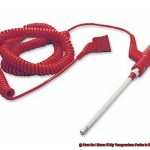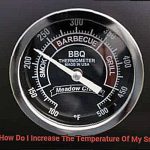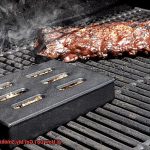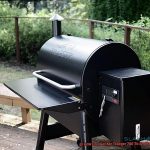Are you tired of constantly babysitting your smoker to make sure it doesn’t fizzle out? Do you find yourself frustrated by the inconsistent temperature and smoke production that can ruin your barbecue dreams? Well, fear not my fellow pitmasters, because we’ve got the solution to your problem – how to keep your smoker from going out.
Smoking meat is an art form, and maintaining the perfect temperature and smoke production is key to achieving a mouthwatering, tender, and juicy result. However, keeping your smoker lit and at the right temperature can be a challenge, especially if you’re new to smoking or have a particularly finicky smoker. But don’t worry, we’ve collected the top tips and tricks for keeping your smoker going strong so that you can focus on perfecting your recipe and impressing your guests.
In this article, we’ll cover everything from choosing the right fuel and smoker to adjusting the airflow and maintaining proper heat levels. You’ll learn how to avoid common pitfalls that cause smokers to go out, as well as how to troubleshoot issues if they do arise. Whether you’re a seasoned pitmaster or just starting out on your smoking journey, these tips will help you achieve the perfect smoked meat every time without any frustration or stress caused by a dying fire. So let’s dive in together and take your smoking game up a notch.
Contents
Preparing Your Smoker
The tantalizing aroma of smoked meat is hard to resist, but it takes a bit of effort to keep your smoker going for long periods. Properly preparing your smoker before cooking is crucial to maintain the desired temperature throughout the smoking process and ensure it stays lit.
Here are some tips and tricks to make sure that your smoker is ready to go:
Clean the Firebox and Chamber
Start by making sure that the firebox and chamber are clean and free of debris. Remove any ashes or debris from the ash pan and chamber, and make sure that the firebox is clear of any obstructions. This will prevent airflow issues that could cause your smoker to go out.
Check the Fuel Source
Make sure that you have enough fuel for your smoker, be it wood, charcoal, or pellets. If you’re using charcoal, make sure that it is dry and well-lit before adding it to the firebox. If you’re using wood, ensure that it’s seasoned correctly and chopped into small enough pieces to fit in the firebox.
Maintain Proper Airflow
Good ventilation is key to maintaining a consistent temperature inside your smoker. Make sure that the dampers are open and adjust them as needed to maintain the desired temperature. You may also want to use a fan or blower to help regulate airflow.
Consider Using a Chimney Starter
Using a chimney starter or other fire-starting aid can help you get your fuel source lit quickly and efficiently. This will save time and ensure that your smoker stays lit throughout your cook.
Monitor Temperature
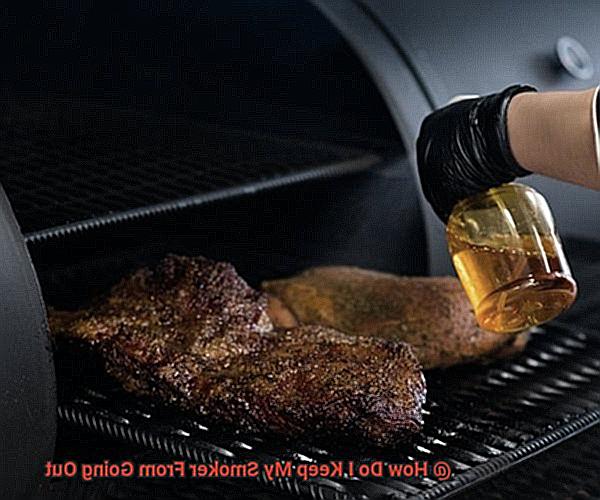
Regularly monitor the temperature of your smoker with a thermometer or digital temperature controller. Make adjustments as needed to maintain a consistent temperature throughout the smoking process. Remember, low and slow is the way to go.
Use a Water Pan
Adding a water pan to your smoker can help regulate temperature and keep your meat moist while adding flavor.
Maintaining Proper Airflow
The secret to achieving mouth-watering, fall-off-the-bone deliciousness lies in maintaining proper airflow. As a seasoned smoker enthusiast, I’m here to share my tips and tricks for becoming an airflow expert.
First and foremost, adequate ventilation is crucial. Your smoker should have plenty of openings for air to flow in and out. This allows for a consistent flow of oxygen, keeping the fire burning and preventing any mishaps mid-cook.
In addition to ventilation, temperature control is paramount. Regularly monitoring the temperature inside your smoker will ensure optimal airflow. Adjusting the position of your vents or dampers is a great way to regulate the flow of air and maintain a steady temperature. With practice, you’ll become a pro at maintaining the perfect temperature levels.
Next up, fuel selection matters. Different types of wood or charcoal require different levels of airflow to burn effectively. Experiment with different fuels and adjust your ventilation accordingly until you find the perfect combination for your specific needs.
To summarize, here’s a quick checklist for maintaining proper airflow in your smoker:
- Ensure sufficient ventilation
- Monitor temperature regularly
- Experiment with different fuels
- Adjust ventilation as needed
Monitoring Temperature Regularly
Then let’s talk about the importance of monitoring temperature regularly. It’s a crucial step in achieving perfectly smoked, juicy meat that will leave everyone licking their fingers.
First things first, let’s establish the ideal temperature for smoking meat: it should be between 225°F and 250°F. But how do you ensure that your smoker is maintaining this temperature range? Here are a few methods:
- Use a thermometer: Digital, wireless, and analog thermometers are all available options. However, digital thermometers are the most reliable and easy to read. Wireless thermometers allow you to monitor the temperature even when you’re not right next to your smoker.
- Use your senses: Your hands can be a great tool in determining the temperature of your smoker. If it’s too hot, you won’t be able to keep your hand over the smokestack for more than a few seconds. If it’s too cold, there will be very little smoke coming out of the smokestack.
It’s important to monitor the temperature of your smoker regularly throughout the cooking process. This will help you maintain consistent heat and ensure that your meat is cooked to perfection. If you notice that the temperature is too high or too low, make adjustments as needed by adding more fuel or adjusting the vents on your smoker.
In addition to monitoring temperature, there are other factors that can affect the quality of your smoked meats, including the type of wood used and the amount of smoke produced. However, by mastering temperature control, you’ll be well on your way to becoming a smoking pro.
Using a Water Pan
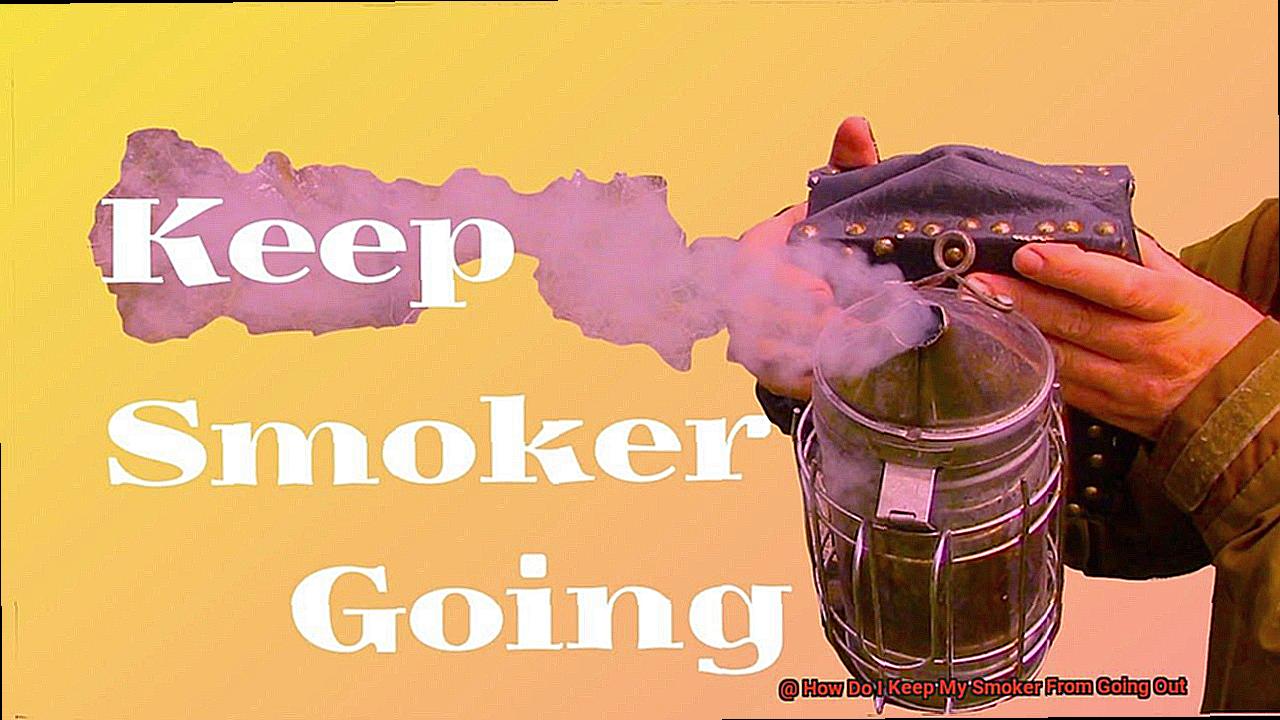
A water pan is a simple yet effective tool that can help regulate temperature and add much-needed moisture to your smoker. By placing a shallow pan filled with water inside your smoker, the water will evaporate as the smoker heats up, creating a humid environment that benefits your meat in two important ways.
Firstly, the moisture and humidity created by the water pan help regulate the temperature inside your smoker. Acting as a heat sink, it absorbs excess heat and releases it slowly, helping to maintain a consistent temperature throughout your cooking process. This is particularly important for low and slow cooking, where even a slight fluctuation in temperature can ruin your meat.
Secondly, the moisture in the air inside the smoker helps keep your meat moist and juicy. As meat cooks, it will naturally lose moisture through evaporation. However, when there is humidity in the air inside the smoker, some of that moisture will be absorbed by the meat, helping to prevent it from drying out.
Using a water pan is incredibly easy – simply fill a shallow pan with water and place it on one of the lower racks in your smoker. You can use any type of pan that is safe for high temperatures, such as a disposable aluminum pan or a cast-iron skillet. Just remember to monitor the water level regularly and refill as needed.
Utilizing Fans and Blowers
Utilizing fans and blowers can take the hassle out of smoking meat and ensure that your food comes out perfectly every time. These devices are designed to regulate the temperature inside your smoker by circulating air and keeping the fire going.
There are several types of fans and blowers available on the market. The most common option is electric fans and blowers. They are highly efficient in keeping the fire going and can be controlled with a thermostat or remote control. Some models even come equipped with timers, allowing you to set them to turn on or off automatically.
If you’re planning on using your smoker in remote locations or outdoor events, battery-operated fans and blowers are a great option. These devices don’t require electricity, so you won’t be tethered to an outlet. However, they do require batteries that may need to be replaced frequently.
For those who prefer a more traditional option, manual fans and blowers are available as well. These devices require some effort to use as they are typically hand-cranked or operated with a bellows. However, they are highly effective at keeping the fire going and are perfect for those who want to avoid using electricity or batteries.
Using fans and blowers can also enhance the overall flavor of your meat by creating consistent heat and smoke flow. This means that your meat will be cooked evenly, resulting in a deliciously smoky flavor throughout. Additionally, using these devices can help prevent flare-ups caused by uneven heating.
Before choosing a fan or blower for your smoker, it’s important to ensure that it is compatible with your specific model. Some may require additional attachments or modifications to work properly. Always read the manufacturer’s instructions carefully before using any fan or blower with your smoker.
Choosing the Right Fuel Source
Look no further than choosing the perfect fuel source for your smoker. With a variety of options available, it’s important to consider the advantages and disadvantages of each.
Charcoal is a popular choice for its ability to burn hot and impart a strong smoky flavor to meat. However, it can be a challenge to control the temperature and maintain a consistent fire for long periods. If you’re up for the challenge, charcoal can be a great choice for achieving that classic smoky flavor that we all know and love.
Wood is another excellent option that allows you to experiment with different types of wood to create unique flavors. Whether it’s hickory, mesquite, or applewood, each type of wood offers a distinct flavor profile. However, like charcoal, maintaining a consistent temperature and fire can be tricky.
Pellets are a newer option that have gained popularity in recent years. These compressed wood pieces are designed specifically for use in pellet smokers and offer more consistent burn and temperature control than other fuel sources. Pellets are an excellent choice for those who want convenience without sacrificing flavor.
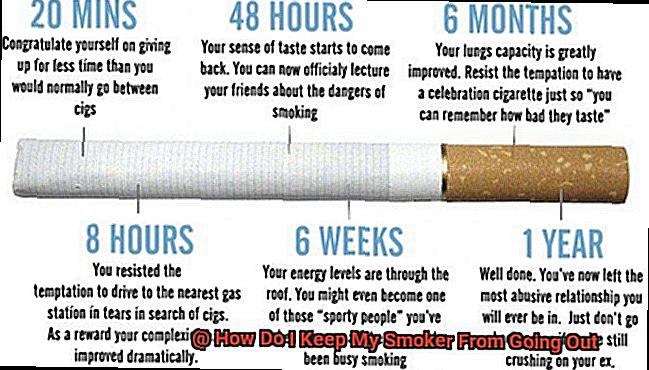
For those who prioritize convenience above all else, gas smokers offer an easy-to-use option that requires minimal maintenance. However, gas smokers often lack the smoky flavor that comes with using other fuel sources and may not be suitable for serious smoking enthusiasts.
Cleaning the Firebox Regularly
Then you know that to keep your fire burning strong and producing the best flavors, it’s essential to keep your firebox clean. The firebox is the part of the smoker where the wood or charcoal is placed to create heat and smoke.
Over time, ash and debris can accumulate in the firebox, which can restrict airflow and cause your fire to go out. You don’t want that to happen, so here are some steps to help you clean your firebox regularly and keep it in tip-top shape.
- Step one: Remove any leftover ash or debris from the firebox using a metal ash tool or shovel. Protect yourself with gloves and eyewear as this stuff can be hot and harmful.
- Step two: Scrub the inside of the firebox with a stiff-bristled brush to help remove any stubborn ash or grease buildup. You can also use a vacuum cleaner with a hose attachment to suck up any remaining debris.
- Step three: Check the air vents. These vents allow oxygen to flow into the smoker, which is necessary for combustion. If they are clogged with debris, it can restrict airflow and cause the fire to go out. So make sure those air vents are free and clear.
In addition to cleaning your firebox regularly, using high-quality fuel sources like hardwood charcoal or wood chunks is crucial. Cheaper alternatives like briquettes or lighter fluid produce more ash and can leave your firebox dirtier than necessary.
Adjusting Vents as Needed
As you embark on this delicious journey, it’s important to understand the significance of adjusting vents for optimal performance. Vents regulate the airflow that enters and exits your smoker, directly impacting its temperature and overall cooking ability.
Here are some pro tips to help you adjust your smoker’s vents like a pro:
Clean Your Vents
Before making any adjustments, ensure that your smoker’s vents are clean and free from any obstructions or debris. A clean vent will function optimally, allowing for the perfect amount of airflow.
Temperature Control
Your smoker’s temperature gauge is your best friend when it comes to adjusting vents. If the temperature starts to drop, open up the vents slightly to allow more oxygen in to fuel the fire. Conversely, if the temperature begins to climb too high, reduce the amount of oxygen entering by closing down the vents.
Know Your Smoker
Different smokers may require different adjustments to their vents. For instance, some smokers have separate vents for the firebox and cooking chamber, while others have one vent that regulates both areas. Be sure to read your smoker’s manual and understand how it works before making any alterations.
Practice Makes Perfect
Mastering the art of adjusting your smoker’s vents takes practice and patience. It may take a few attempts before you can correctly balance the airflow to keep your smoker burning steadily and producing mouthwatering smoked meats every time.
Conclusion
In conclusion, the key to producing mouthwatering, tender and juicy smoked meat is ensuring that your smoker stays lit.
Luckily, there are several tips and tricks you can follow to maintain the perfect temperature and smoke production while avoiding common pitfalls that cause smokers to go out. Proper preparation before cooking is essential, including cleaning both the firebox and chamber, checking your fuel source, maintaining proper airflow, using a chimney starter, regularly monitoring temperature with a thermometer or digital temperature controller, and adding a water pan.
For even greater convenience and precision control over temperature levels, fans and blowers can be utilized as well. It’s also important to select the right fuel source for your smoker – whether it be charcoal, wood or pellets – and to clean the firebox regularly to keep it in tip-top shape.
Adjusting vents as needed can also directly impact your smoker’s temperature and overall cooking ability.


